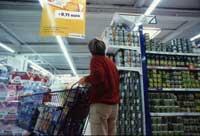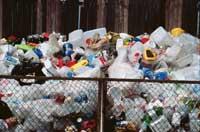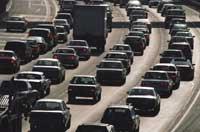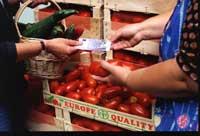Responsible purchase

Nowadays the habit of going to hypermarkets is widespread and understandable, as they offer the possibility to go by car here, allowing you to make purchases all week in the same place.
While domestic garbage is observed, to compare it with the old one, a significant change is observed. Before the recycling era, it was a single waste bin in which organic waste was mostly deposited. Orange bark, meat bones and cabbage leaves were mixed with a few yogurt pots and plastic bags. Glass bottles were barely found in the trash, as most of them returned to the store.
Currently, instead of having a single waste bin, there are three or four bags in the same trash bin, to facilitate recycling through a correct classification. But the most striking thing is the content. The waste bin is filled in most houses with plastic containers, bags and metal cans. No wonder, since most of the products purchased are collected. For example, buying a kilo of tomato takes home, in addition to tomatoes, cardboard bandejula and plastic wrap.
The aim of these wrappers is not only to facilitate the transport of the product to the home, but also to make it more attractive. But some people think that packaging is not essential. One can think of a waste of raw materials and energy in the production of the packaging, without forgetting the contamination that occurs in the transport and in the transformations of the raw materials.

Why not take responsibility for the buyer? That is, to be responsible for what has been consumed and contaminated in the production and transport of products. In this sense, it is intended to promote a more responsible purchase that reduces the environmental impact of current consumption habits.
There is no choice but to change the habits to reduce the damage caused by excessive consumption. But changing habits doesn't seem so simple. The first step can be to recover the customs of before: go to buy bread with the basket in hand, turn off the light when not needed, remove the heating when tempering the house, go on foot instead of taking the car to nearby shops, etc.
A thousand questions to make the purchase responsibly
After going to buy something, the following questions can help us. Do I really need it?
Many useless devices and objects accumulate practically without using them, so before buying something you can see if you can ask or rent someone depending on the use to be given.

For example, many cars are only sporadically used. Each car has parts of eleven different materials. Environmental pollution occurs from the exploitation of raw materials in the production of each of these materials to their transformation and transport to the automobile factory. Therefore, in many cases it is not worth buying a car from an ecological or economic point of view, if public transport is adequate or there is the possibility of renting it occasionally or sharing it with other people.
Where is it made?
The transport of imported products means high fuel consumption. In addition, it is more difficult to know whether or not the production company complies with environmental regulations. It is also almost impossible to know if they use toxic substances or if workers receive a living wage for their distance. It is known that many companies take their factories to countries with softer environmental regulations, usually in development, which can call into question that the production of the product is clean.
Once the product is used, does the producer collect it and recycle it? Especially in the case of products with lots of different materials (cars, washing machines, televisions, computers) this question is very important since all these materials must be recycled separately. Faced with this difficulty, they sometimes accumulate simply in landfills.
Is it single-use?

The products that are thrown after a single use are very fashionable: handkerchiefs, cameras... and soon we will also have mobile phones to use and pull. There are many tools that are discarded rather than repaired to buy a new one, among other things because often the repair is more expensive than buying a new one. Going back to the ancestral traditions, it would be appropriate to try to keep the acquired appliances as durable as possible. One solution would be to increase the price in exchange for environmental impact, so that the most polluting products would be more expensive than the most environmentally friendly.
There are many more questions that can come to mind and it seems that the key is in the intelligent search for answers. Now it is only necessary that the product labels include answers to these questions, that is, guarantee the right of information.
Published in 7K.
Buletina
Bidali zure helbide elektronikoa eta jaso asteroko buletina zure sarrera-ontzian











